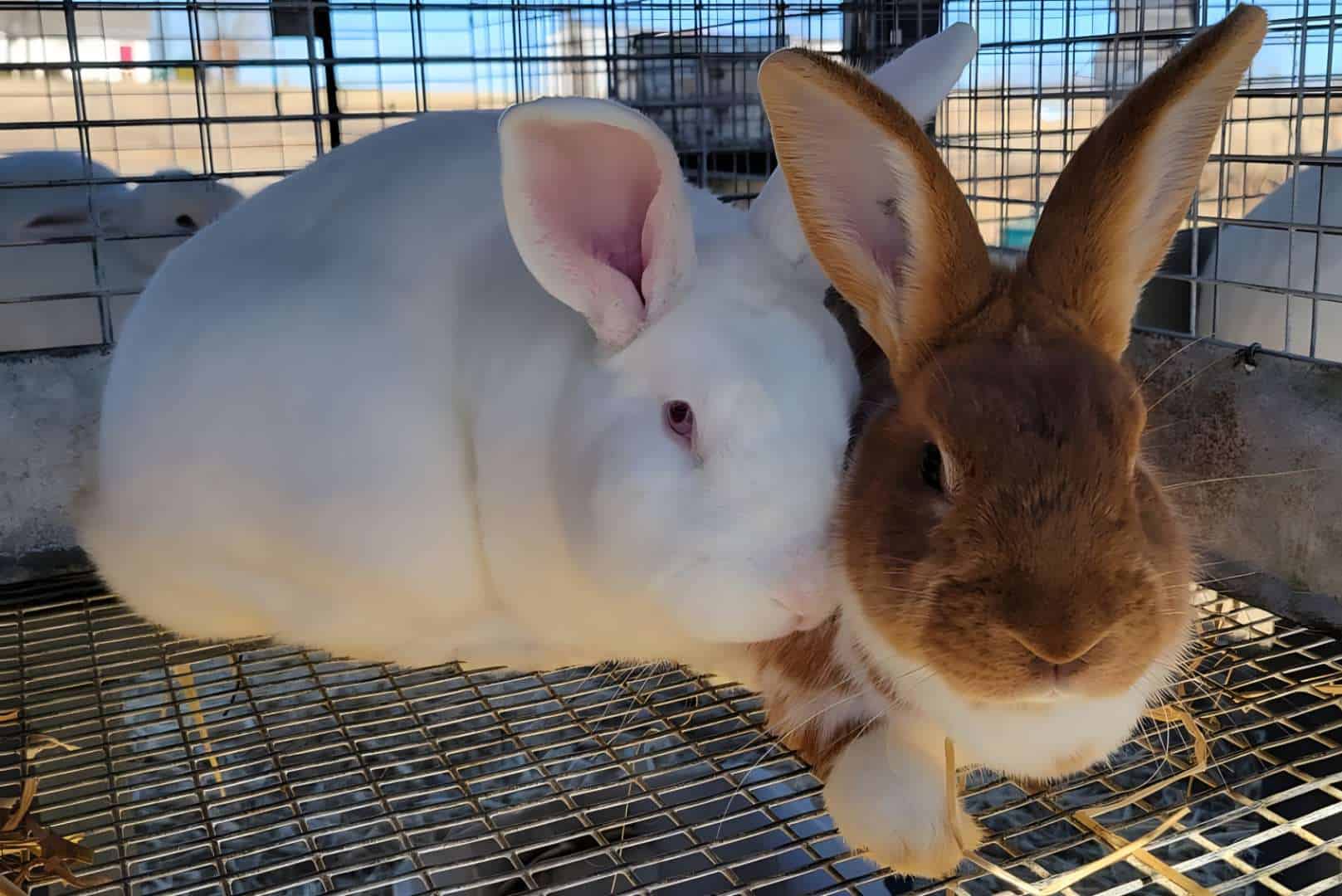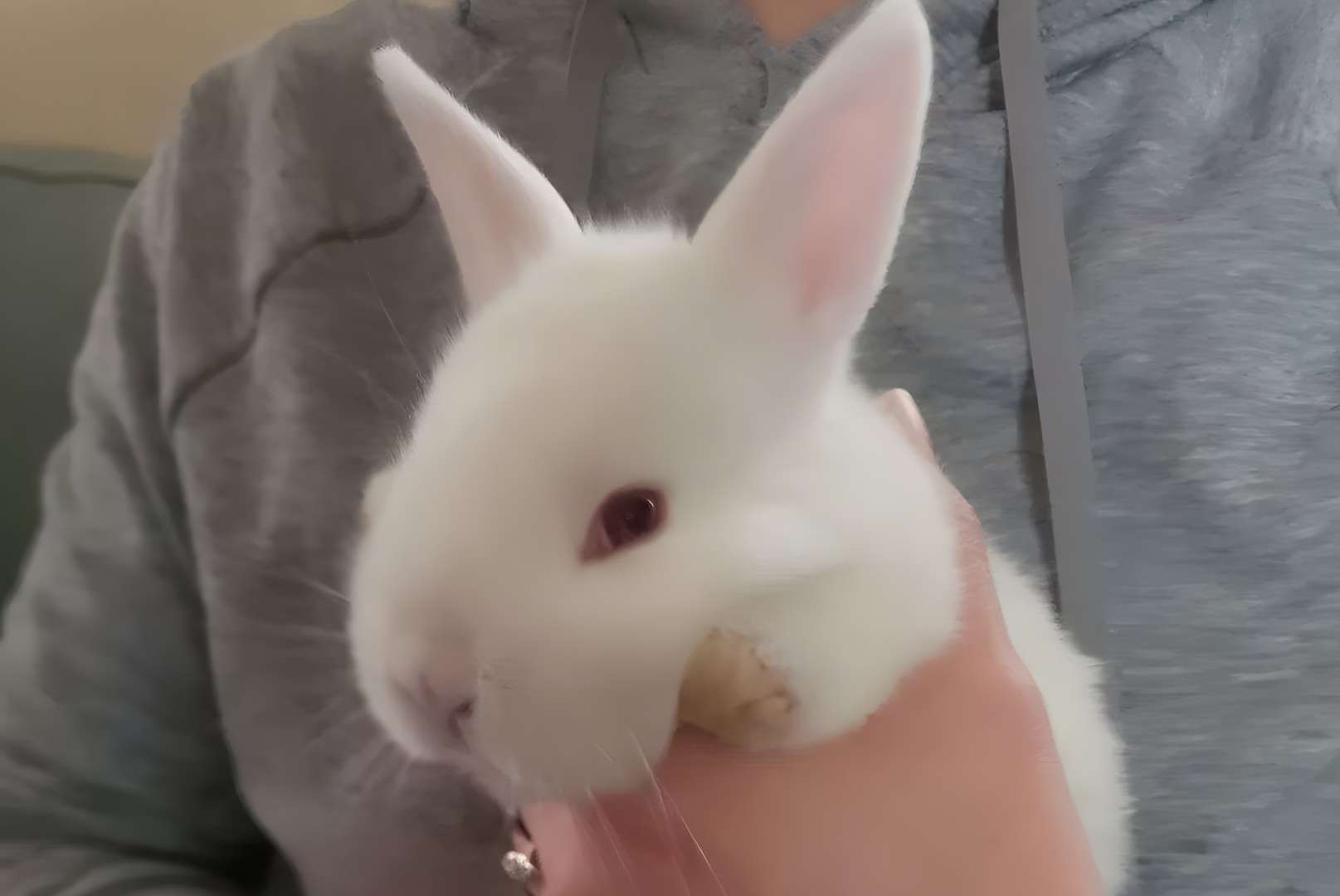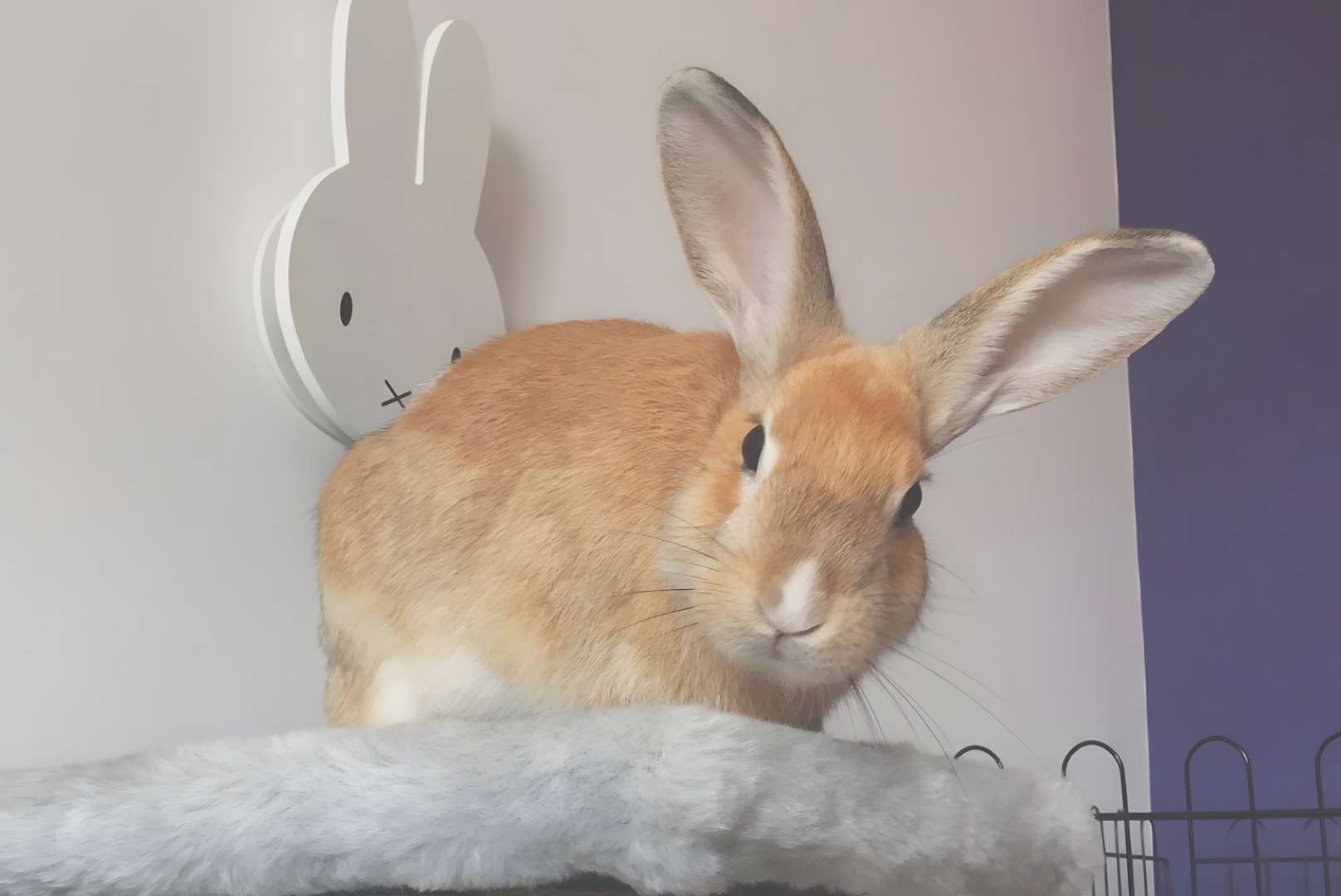The New Zealand rabbit is a breed that is primarily used for its meat. Also, this breed is well-known as a show rabbit. With their outgoing and gentle personality, they are also known as one of the best pets to have. As docile creatures, they are friendly with other breeds.
Facts about New Zealand Rabbit
Weight | 10 to 12 pounds in male; 9 to 11 pounds in female |
Size | Medium to Large |
Lifespan | 5 to 8 years |
Temperament | Affectionate, even-tempered, docile |
Similar breed | Belgian hares, Flemish giant Rabbit |
Color | White, Black, Red, Blue, Broken |
Best suited for | Single and seniors, families with children, and first-time owners |
Rarity | Common |
Background and History of the New Zealand Rabbit
Because of the breed’s name, many falsely believe that these rabbits came from New Zealand. However, this breed was first developed in California in the 20th century. They were bred from Belgian hares and Flemish giant rabbits in 1913.
At first, this breed claimed popularity under the name New Zealand Red Rabbit. After a few years, the Albino type of the breed was separately developed.
In 1916 and 1917, the New Zealand White rabbits were recognized. The breeders were attracted to the pure white coat with its rich deep color. The beautiful coat complements the red eyes of the rabbit.
The breeders produced different varieties by selecting the most suitable breeds. The Black New Zealand Rabbits were introduced in 1958. The broken type was accepted by ARBA in 2010, while the blue variety was recognized in late 2016. In total, five New Zealand rabbit varieties were accepted by ARBA.
New Zealand Rabbit’s Appearance
The New Zealand Rabbits have a fairly well-rounded commercial body shape. They have a robust and muscular build, evident from hip to rib. Their heads are moderately rounded and correspond to the rest of their bodies. Their ears are thick, well-furred with rounded tips, and carried upright.
The doe, or female, has a maximum of 10-12 pounds weight, whereas the male buck should weigh between 9 and 11 pounds.
The coat of the New Zealand rabbit has short and soft flyback fur. Because of this, it goes back quickly into a normal position after being stroked in any position. Plus, the coat is attached tightly to the pelt, which is the undressed skin with its hair or fur. Their coats do not need too much fixing or arrangement.
The five colors seen in New Zealand rabbits are white, black, red, blue, and broken colors. Every color of the coat belonged to different varieties of the breed. New Zealand rabbits’ colorful furs are very attractive. They are certainly appreciated for their appearance.
Personality and Behavior
New Zealand rabbits are raised for their meat and fur production. However, they also make excellent pets. They are docile, intelligent, easily taught, and affectionate. Aside from that, they can learn how to use the toilet by using the litter box. They are also gentle, friendly, and easy to touch and handle.
These rabbits are both friendly to humans and other rabbits. They do well with children and with other pets. From a young age, they are accustomed to socializing with others. However, those who did not experience interaction find it difficult to mingle with others. They are also observed to be afraid and worried most of the time.
If you have a young rabbit, make sure to train, love, and care for them. Treat them like humans too. These furry pets love to be cuddled. You can also put them on your lap while pampering them. When they get bored, they love to chew some toys to decrease boredom. They rarely bite or show aggression.
For the homely rabbits, it is hard to train them on how to put their feces in the litter box so they won’t scatter. You will need a lot of patience and time to teach them how to do the trick. It will be accomplished within a few months. [7 Easy Steps to Litter Train A Rabbit]
New Zealand rabbit breeds are perfect as pets and companions. They are suitable for single people looking for a warm and friendly companion. They are also good pets for senior citizens looking for fun and hobbies to relieve their boredom.
Other Behaviors of the New Zealand Rabbits
New Zealand rabbits are known for their easygoing, gentle, and friendly nature. But there are some rabbits of this breed that are the exact opposite. They can be spoiled brats, stubborn, vengeful. They don’t get well with others because they seek to harm others in return.
This breed needs to be checked now and then, especially during complicated situations. You need to know the behavior and personality of each rabbit so that you can give them the proper care.
Common Health Issues and Treatment for New Zealand Rabbits
Arthritis and Treatment
Arthritis is a common disease among New Zealand rabbits. It is experienced mostly by white New Zealand rabbits. This condition results in painful inflammation and joint immobility. Unfortunately, rabbits suffering from arthritis cannot be determined easily. The disease has a slow reaction and gradual effect.
This disease is treated with non-steroidal anti-inflammatory medicines. With the help of the drugs, the inflammation in the joints is lessened. Other treatments include commercially available rabbit food with added glucosamine. It is responsible for providing joint lubrication and increasing joint movement.
Another treatment is massage. Before the treatment, the vet needs to discuss the importance of physical therapy. Another treatment option involves a veterinarian, a physiotherapist, or an acupuncturist. These practitioners can provide regular treatments to provide pain relief and reduce symptoms.
Spinal Injury and Treatment
The spines of rabbits are very delicate and easy to break. When rabbits are terrified, the hind legs kick suddenly. This movement is improper. Falling also causes damage to their spinal cord. The symptoms include paralysis, incontinence, and weakness. This is a common issue for New Zealand rabbits.
The treatment depends on the condition of the fracture. If severe, such as complete paralysis of the hind legs and bladder, go to the veterinarian. Sedating your rabbit is one of the best options. Though it can’t be cured, anti-inflammatory medications help relieve the pain.
Dental disease and treatment
Rabbits’ teeth are continuously growing. Some rabbits develop overgrown teeth. It can change the alignment of the mouth and lead to an abscess in the gums. If not taken medical attention, it will cause infection.
If there are abscesses in the gums, the vet needs to remove them surgically. If taking the antibiotic seldomly didn’t work, the medicine should be given regularly. They need a balanced diet and a lot of hay to prevent this from occurring.
Taking Care of New Zealand Rabbits
Shelter
New Zealand rabbits staying outdoors also need good areas to sleep and eat. It must also be wide enough to be comfortable to stretch their legs and jump. Rabbits’ houses should be large. As a rule of thumb, these rabbits need an area that is closed and safe. It must be about 30” by 36”.
For indoor rabbits, their designated areas should be secured with stable wire to ensure their safety and prevent them from accessing unwanted spaces. It must also be wide enough for the New Zealand rabbits to stretch. They prefer wide and large places to play regularly.
Their cages should be cleaned every day, while the beddings should be changed every week. For indoor breeding, remove or hide any materials such as wires or electric cables. Your rabbit may gnaw these items. On the other hand, outdoor New Zealand rabbits must be in a safe area so you can protect them from predators.
Diet
The New Zealand rabbit’s diet consists of high-quality hay. Timothy hay is the best for your buck or male New Zealand rabbit. Plus, a good balance of fruits, pellets, vegetables, and leafy greens and apples are the best options.
But remember that not all vegetables, fruits, or leafy greens are safe for rabbits. When you feed them a lot of leafy veggies, it can cause digestive issues. Romaine lettuce and other green leaves are high in fiber and nutrients for your rabbits.
Grooming
New Zealand rabbits love to groom themselves as part of their daily life. As an owner, you are responsible for grooming them. When rabbits groom themselves, they use their tongues and may ingest some of their fur. Aside from reducing the amount of fur or hair, they may also develop a furball inside their stomach.
You must groom them once or twice a week. Comb them with a bristled brush or soft brush. If they are in molting season, you must groom them more often. Also, rabbits should not take baths. It may cause cardiac problems and heavy stress. To keep your rabbit clean, you should also clean their area regularly with a damp cloth.
Breeding
Rabbits are easy to breed because they multiply in a short time. You will know that a rabbit is in heat if it acts restlessly. It will also start rubbing its chin on its feed and water container. You will also notice that it wants to join other rabbits.
A doe can be bred when she reaches 17 weeks old. If its vulva is slightly swollen and moist, it is ready for breeding. It also lies in its stomach, and its tail lifts when it’s touched. Both the doe and the buck must be in good condition to breed them successfully.
You must put the doe in the buck’s cage since female rabbits tend to be more territorial. Bucks may also spend a lot of their time sniffing rather than breeding when placed in a new environment. If the rabbits are already experienced, mating happens instantly. If the doe rejects the buck, bring her back to her cage. Wait for about two days before you breed it with other bucks.
Breeding is crucial since the rabbits may hurt each other. It may happen if one is aggressive. You must check on them once in a while. Also, take note of the date when they mate, so you will know when the doe’s delivery date is.
After 32 days, you can expect a doe to give birth to its babies. Does can give birth to seven to 14 kits. Before the doe’s delivery date, make sure you have already prepared a nesting box. Don’t forget to put some hay to keep the babies warm.
It will take 3 to 5 days before the baby rabbits grow their fur. After two weeks, they will start crawling around their box. These times, their eyes are already opened. You can feed them hay and other commercially-made rabbit food for three to four months.
Frequently Asked Questions
Are New Zealand rabbits good pets for families with small children?
New Zealand rabbits get along with children, but it is not advisable to let small kids play with them. With their extensive and heavy body, kids may have difficulty carrying them. They may end up hurting the rabbit, which may lead to a broken bone or spine. Kids who hold the rabbits must know the proper way of handling them.
Can I tame a wild New Zealand rabbit?
No, wild rabbits are more aggressive and defensive. They may bite you if you try to tame them. Instead of taming a wild rabbit, take care of a captive-bred rabbit since they are more docile and calm.
Can I put two New Zealand rabbits in one cage?
Yes, New Zealand rabbits are friendly, so they won’t mind having companions inside their cages. But make sure that they have a large area where they can rest, exercise and play. Immobility can make them unhealthy and sick.
Summary
New Zealand rabbit breeds were bred for their meat and fur production. They have friendly and docile personalities. Plus, they are intelligent and they love to be cuddled. These furry pets are suited for single people and seniors. Even first-time owners will find it easy to take care of them.





